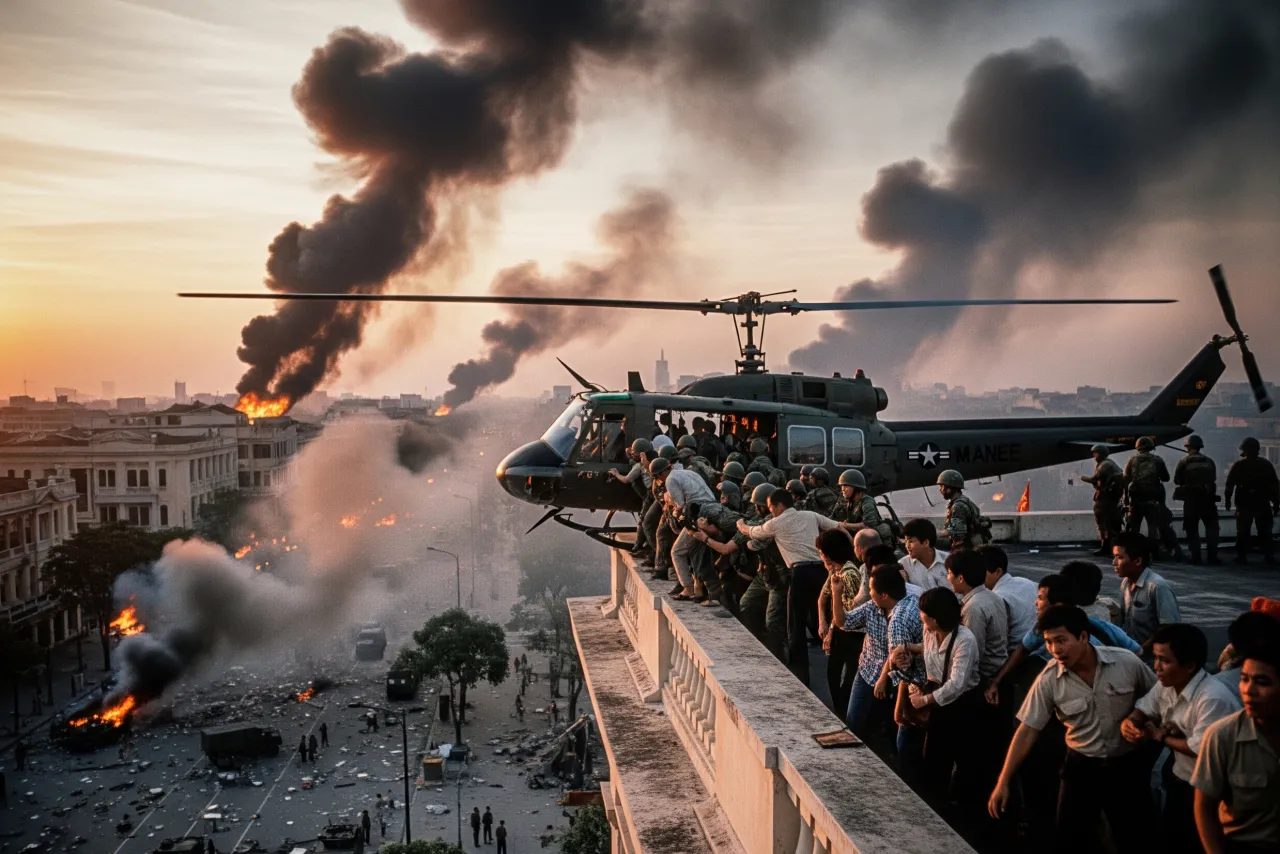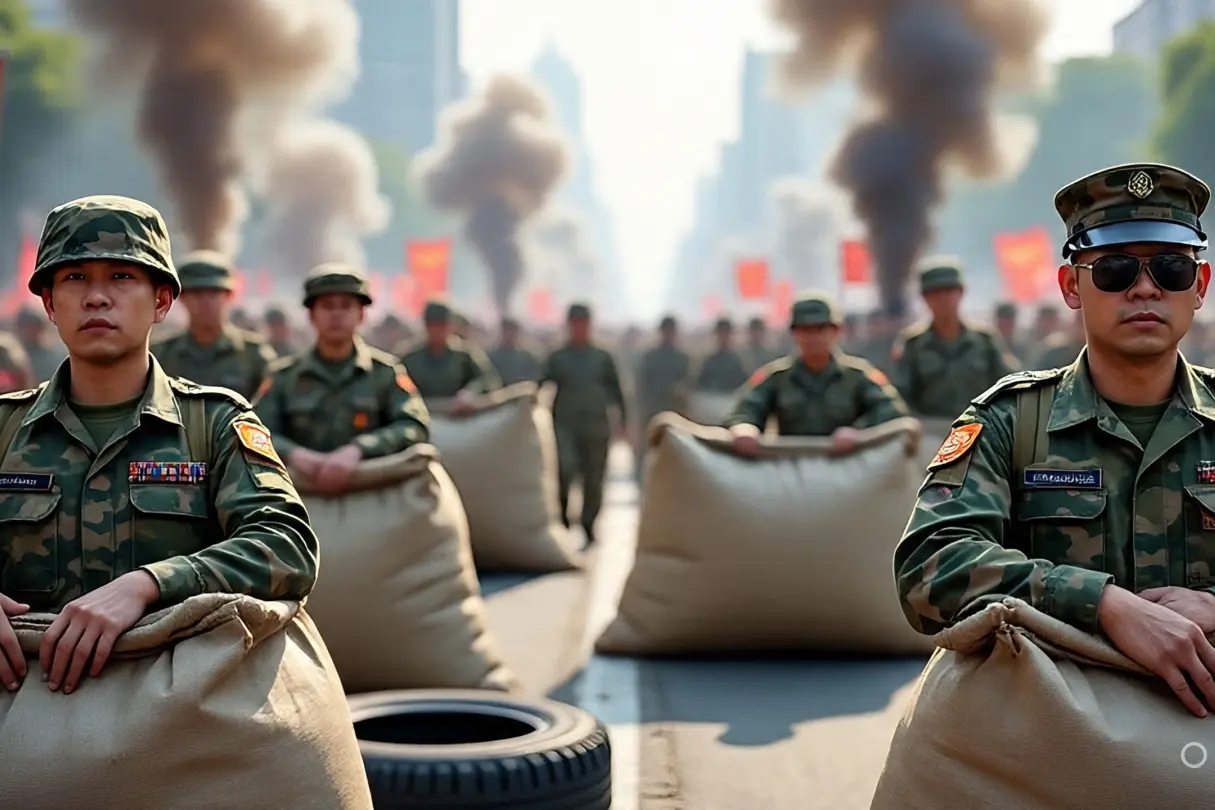The image of helicopters precariously perched atop the U.S. Embassy in Saigon, desperately airlifting personnel as the city teetered on the brink of collapse in April 1975, remains one of the most iconic and haunting symbols of the Vietnam War’s bitter end. For many Americans, it signified defeat and a painful withdrawal from a costly and divisive conflict. For countless South Vietnamese, it marked the fall of their nation and the beginning of a new, uncertain era under communist rule. Yet, in the decades since, a more sinister and intricate narrative has emerged, particularly within some segments of the Vietnamese-American diaspora: the theory that the United States, specifically the Central Intelligence Agency (CIA), deliberately orchestrated the fall of Saigon.
- 🧠 Cold War Shadows: The Geopolitical Chessboard
- 🕵️♂️ Unpacking the Allegations: Declassified Reports and Whispers
- 💔 The Lingering Mistrust: Perspectives from the Diaspora
- 🏛️ The Conventional View: A Convergence of Failures
- 📊 Debunking the Conspiracy: Data and Historical Reality
- ✨ Conclusion: The Weight of History and the Search for Meaning
This isn’t simply a matter of assigning blame for a lost war. This theory posits a far more calculated and Machiavellian motive: that the U.S. government, in a grand geopolitical chess game against the Soviet Union and, more importantly, a rising China, strategically sacrificed South Vietnam to ensure a communist victory in the North. The alleged aim? To create a strong, unified Vietnam that would act as a buffer against Chinese expansionism in Southeast Asia. This narrative, while lacking substantial empirical support, taps into deep-seated feelings of betrayal, mistrust of Western powers, and a yearning to find a logical, albeit unsettling, explanation for a devastating historical event. To understand its enduring appeal, we must dissect the Cold War context, examine U.S. foreign policy objectives, and confront the painful realities of that final, chaotic chapter of the Vietnam War.
🧠 Cold War Shadows: The Geopolitical Chessboard
The Vietnam War was, without a doubt, a major theater in the Cold War, a global ideological struggle between the United States and the Soviet Union. However, by the early 1970s, the strategic landscape was shifting dramatically. President Richard Nixon’s historic visit to China in 1972 signaled a significant realignment of power, with the U.S. seeking to normalize relations with Beijing as a counterweight to Soviet influence.
It is within this context that the CIA fall of Saigon conspiracy theory takes root. Proponents argue that the U.S., recognizing the limitations and increasing unpopularity of the Vietnam War at home, saw an opportunity to leverage a unified, communist Vietnam against China, which had its own complex and often tense relationship with Hanoi. The theory suggests that by subtly facilitating the North’s victory, the U.S. could create a strong, independent Vietnam that would be wary of Chinese dominance, effectively serving as a regional bulwark.
This line of reasoning often cites:
- The perceived abruptness of the U.S. withdrawal: Despite years of commitment and support, the speed and manner of the American departure in the final years are seen as suspicious.
- The reduction in aid to South Vietnam: Cuts in military and economic assistance in the lead-up to 1975 are interpreted not as a sign of waning support, but as a deliberate weakening of the South Vietnamese forces.
- The lack of decisive intervention in the final offensive: The U.S. did not re-engage with significant military force as North Vietnamese troops advanced on Saigon, fueling speculation that this inaction was intentional.
🕵️♂️ Unpacking the Allegations: Declassified Reports and Whispers
Declassified intelligence reports and historical analyses do not offer direct evidence of a U.S. plot to ensure a communist victory. However, conspiracy theorists often interpret certain events and documents through their pre-existing framework. They might point to:
- Intelligence assessments predicting a North Vietnamese victory: These assessments, while accurate in hindsight, are presented not as objective analyses of the military situation, but as evidence that the U.S. knew and perhaps even desired the outcome.
- Discussions about post-war Southeast Asia: Academic and government discussions about the future balance of power in the region, including the potential for Vietnam to counterbalance China, are misconstrued as evidence of a pre-planned strategy.
- Anecdotal accounts and personal testimonies: Stories from individuals who claim to have witnessed or heard about U.S. officials acting in ways that seemed to undermine the South Vietnamese effort are often cited, although these lack broader corroboration.
It’s crucial to note that during this period, U.S. intelligence was often divided and sometimes contradictory in its assessments of the situation in Vietnam and the region. Attributing a singular, unified strategic goal – the deliberate handover of South Vietnam – to the entire U.S. government, let alone the CIA, oversimplifies a complex and often chaotic decision-making process.
💔 The Lingering Mistrust: Perspectives from the Diaspora
For many Vietnamese-Americans who experienced the trauma of the war and the fall of Saigon, the CIA fall of Saigon theory resonates deeply. It offers a narrative that explains the perceived abandonment by a powerful ally and provides a sense of agency in a situation where they felt powerless. The theory taps into:
- Feelings of betrayal: The abrupt U.S. withdrawal left many South Vietnamese feeling abandoned after years of fighting alongside American forces.
- Distrust of Western powers: Historical experiences of colonialism and intervention have fostered a lingering suspicion of Western motives in Southeast Asia.
- A desire for a coherent explanation: The sudden and catastrophic collapse of South Vietnam can be difficult to comprehend, and a conspiracy theory offers a seemingly logical, albeit unsettling, reason for this outcome.
Understanding this perspective requires empathy for the profound loss and displacement experienced by the Vietnamese diaspora. However, it’s equally important to critically examine the historical evidence and separate emotional resonance from factual accuracy.
🏛️ The Conventional View: A Convergence of Failures
The prevailing historical analysis attributes the fall of Saigon to a confluence of factors:
- The weakening of South Vietnamese forces: Years of war, corruption, and declining morale had significantly eroded the effectiveness of the Army of the Republic of Vietnam (ARVN).
- The strategic superiority of North Vietnam: Backed by Soviet support and a determined leadership, the North Vietnamese Army (NVA) launched a highly effective final offensive.
- U.S. military fatigue and declining support: Public and political support for the Vietnam War had waned significantly in the United States, leading to troop withdrawals and cuts in aid. The Watergate scandal further weakened the Nixon administration’s ability to act decisively.
- Internal political instability in South Vietnam: A series of leadership changes and a lack of national unity further hampered the South Vietnamese war effort.
Declassified U.S. government documents from this period overwhelmingly reflect a desire to withdraw from the conflict honorably, but also a growing pessimism about the long-term viability of South Vietnam. There is no evidence within these records to suggest a deliberate plan to ensure a communist victory for strategic gain against China. In fact, many U.S. policymakers at the time were deeply concerned about the implications of a communist takeover and the potential for increased Soviet influence in the region.
📊 Debunking the Conspiracy: Data and Historical Reality
The CIA fall of Saigon theory, while emotionally resonant for some, lacks factual basis:
- No credible documentary evidence: Despite extensive declassification of Vietnam War-era documents, no official record or intelligence report outlines a U.S. strategy to orchestrate a communist victory.
- Contradictory policy goals: The U.S. policy throughout the Vietnam War was explicitly aimed at preventing a communist takeover of South Vietnam. A deliberate reversal of this long-standing objective would have been a monumental and highly documented shift.
- The human cost: Such a cynical and manipulative strategy would have come at an enormous human cost for both Americans and South Vietnamese, with no clear evidence that U.S. policymakers were willing to bear such a burden for a speculative geopolitical gain.
- The actual Sino-Vietnamese War: The brief but bloody Sino-Vietnamese War of 1979, just four years after the fall of Saigon, directly contradicts the theory that a unified communist Vietnam was intended as a U.S. proxy against China. This conflict demonstrated the deep-seated historical tensions and mistrust between the two communist nations.
✨ Conclusion: The Weight of History and the Search for Meaning
The theory that the CIA orchestrated the fall of Saigon is a compelling example of how historical trauma and geopolitical anxieties can intertwine to create alternative narratives. For some within the Vietnamese-American community, it offers a framework for understanding a devastating loss and assigning agency in a seemingly chaotic event. It speaks to a lingering mistrust of powerful nations and a desire to find deeper, hidden meanings in pivotal historical moments.
However, the weight of historical evidence, including declassified documents, expert analysis, and the subsequent trajectory of regional politics, firmly contradicts this theory. The fall of Saigon was a complex event resulting from a multitude of factors, including the internal weaknesses of South Vietnam, the military strength of North Vietnam, and the erosion of U.S. support for the war. Attributing it to a deliberate CIA plot for future geopolitical leverage against China lacks credible support and overlooks the immense human suffering and the actual dynamics of Sino-Vietnamese relations in the aftermath.
Understanding the appeal of this conspiracy theory requires empathy and a recognition of the profound impact of the Vietnam War. However, a commitment to historical accuracy necessitates a reliance on verifiable evidence and a critical assessment of alternative narratives, no matter how compelling they may seem. The true story of Saigon’s fall is one of human tragedy, strategic miscalculations, and the complex interplay of global power dynamics – a reality that, while perhaps less sensational than a secret plot, offers a more accurate and ultimately more meaningful understanding of this pivotal moment in history.




